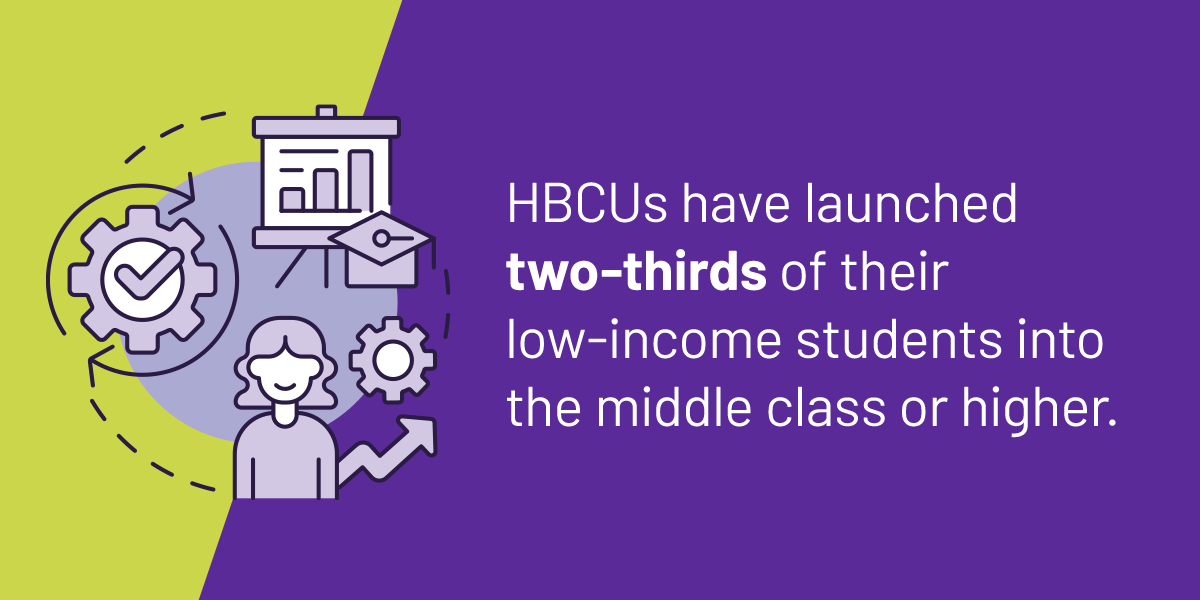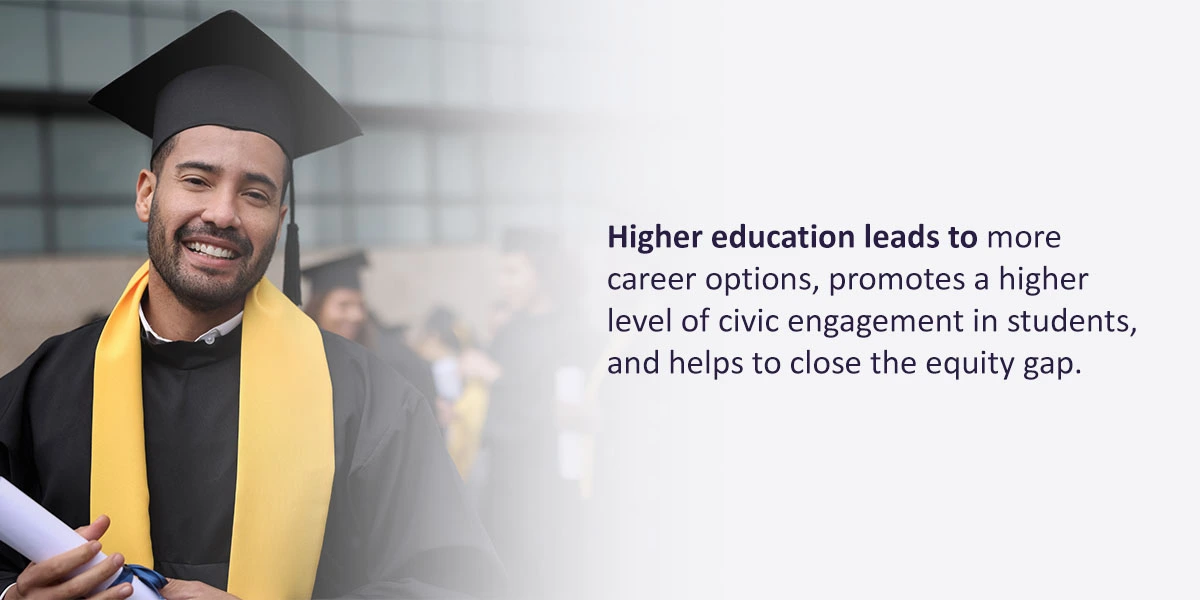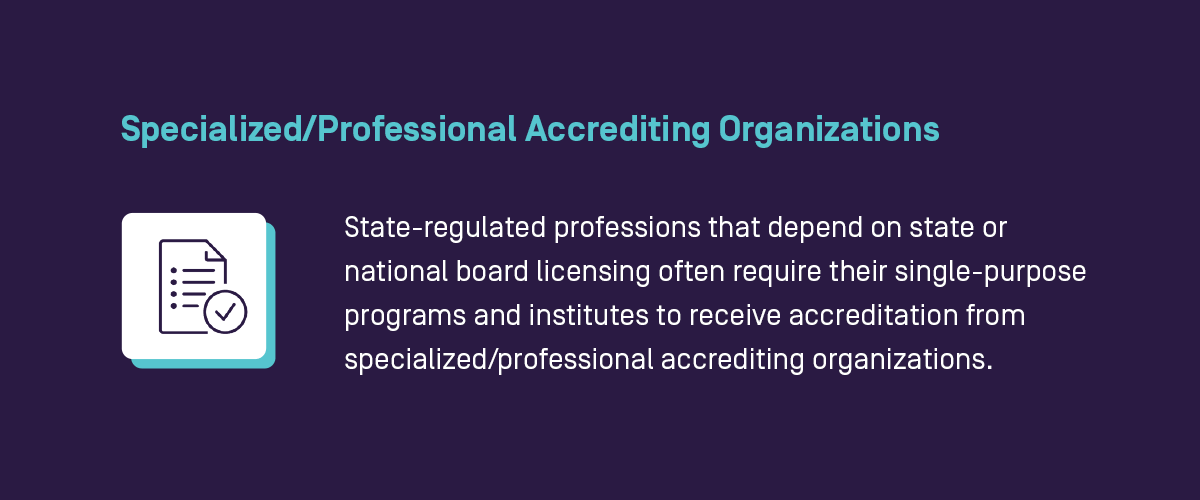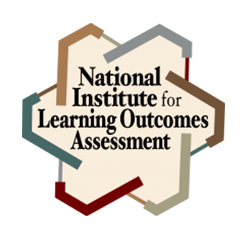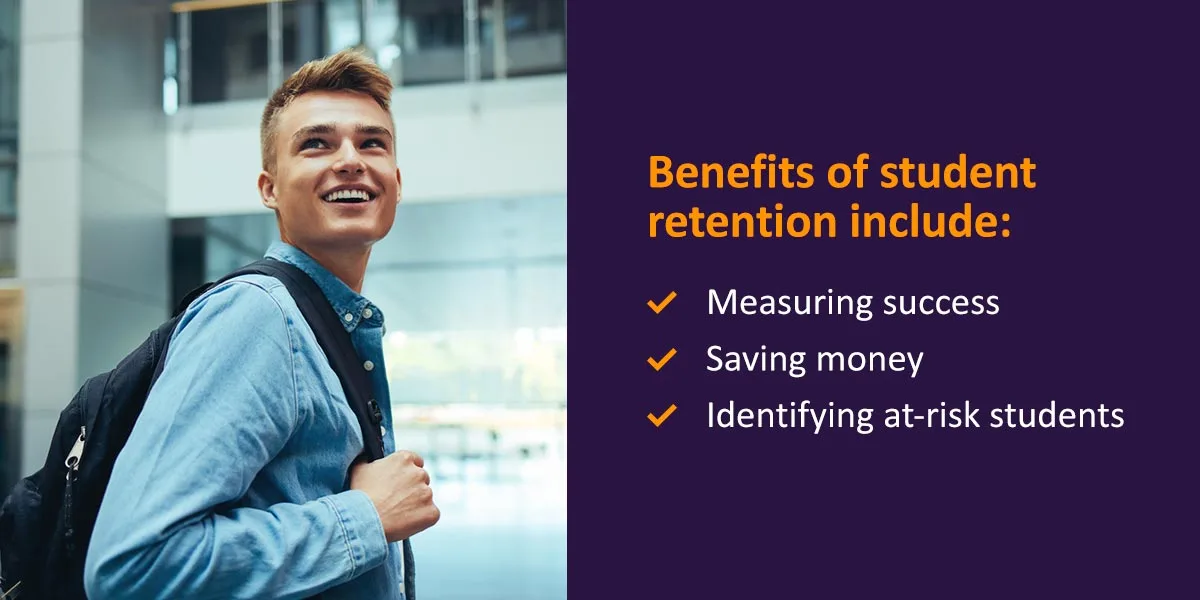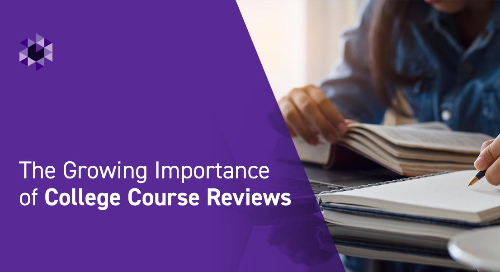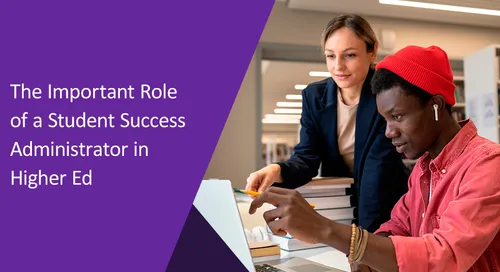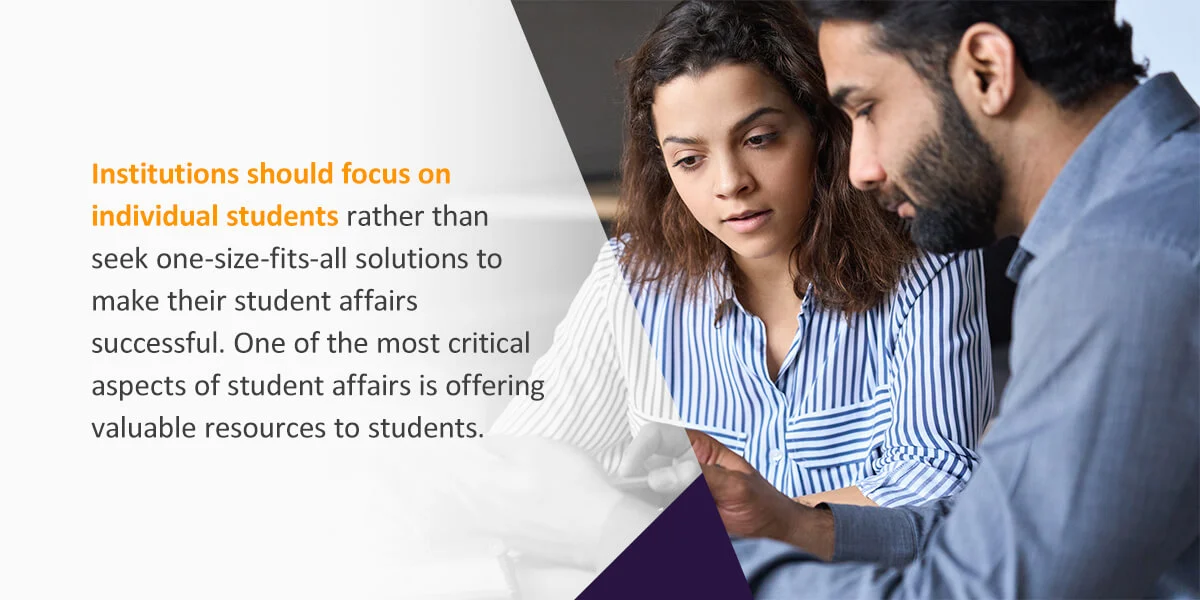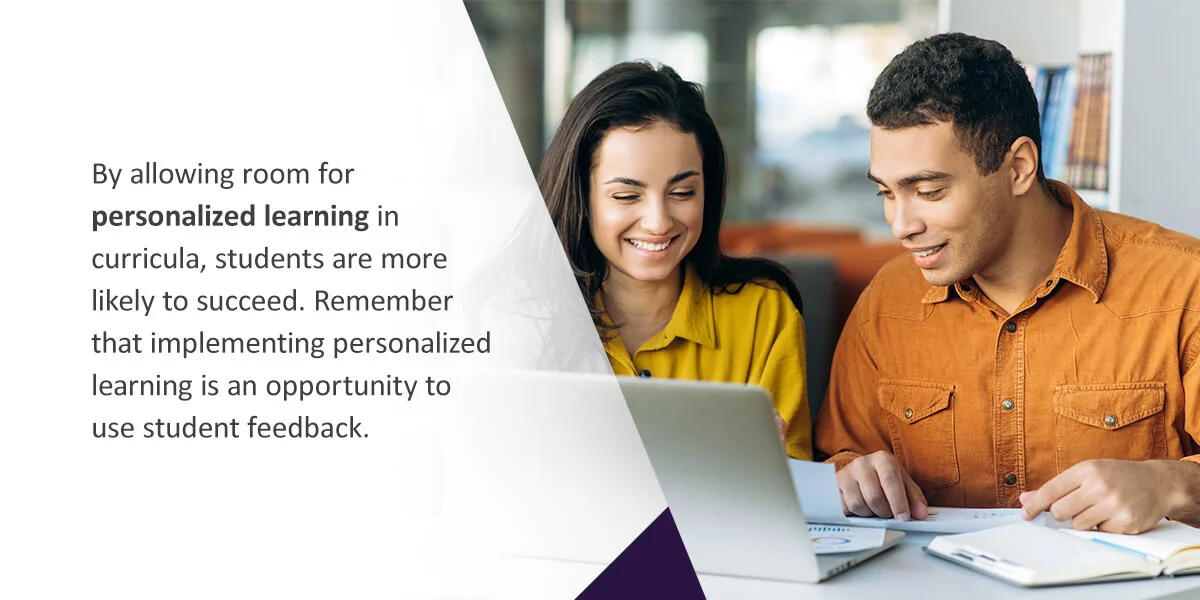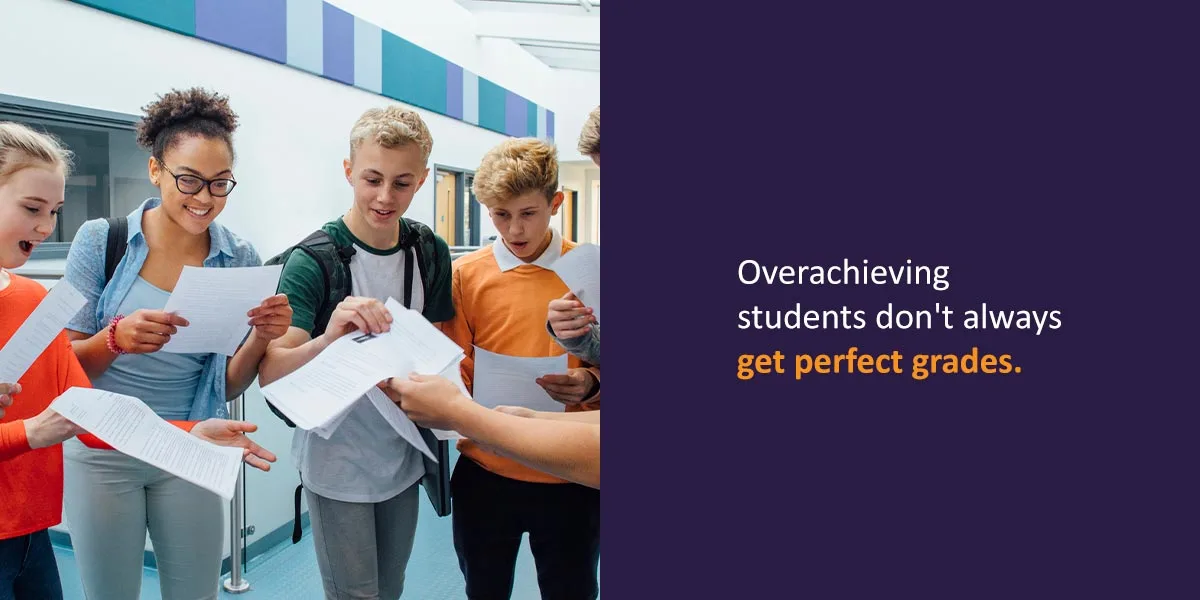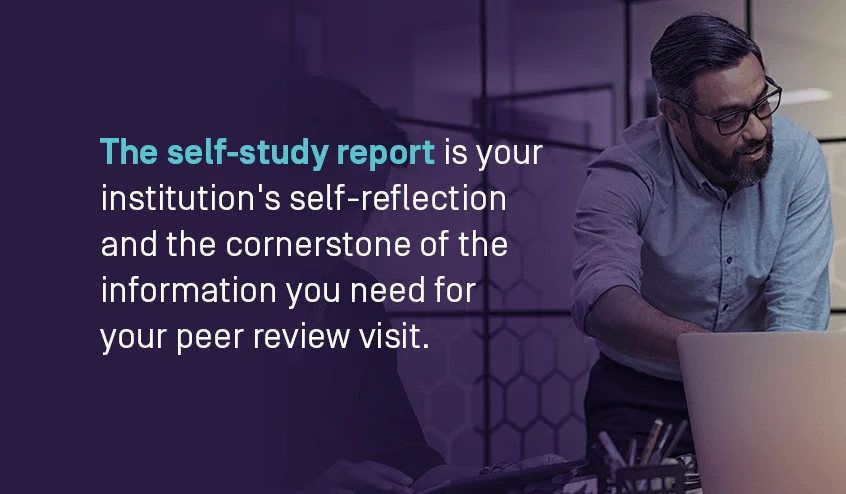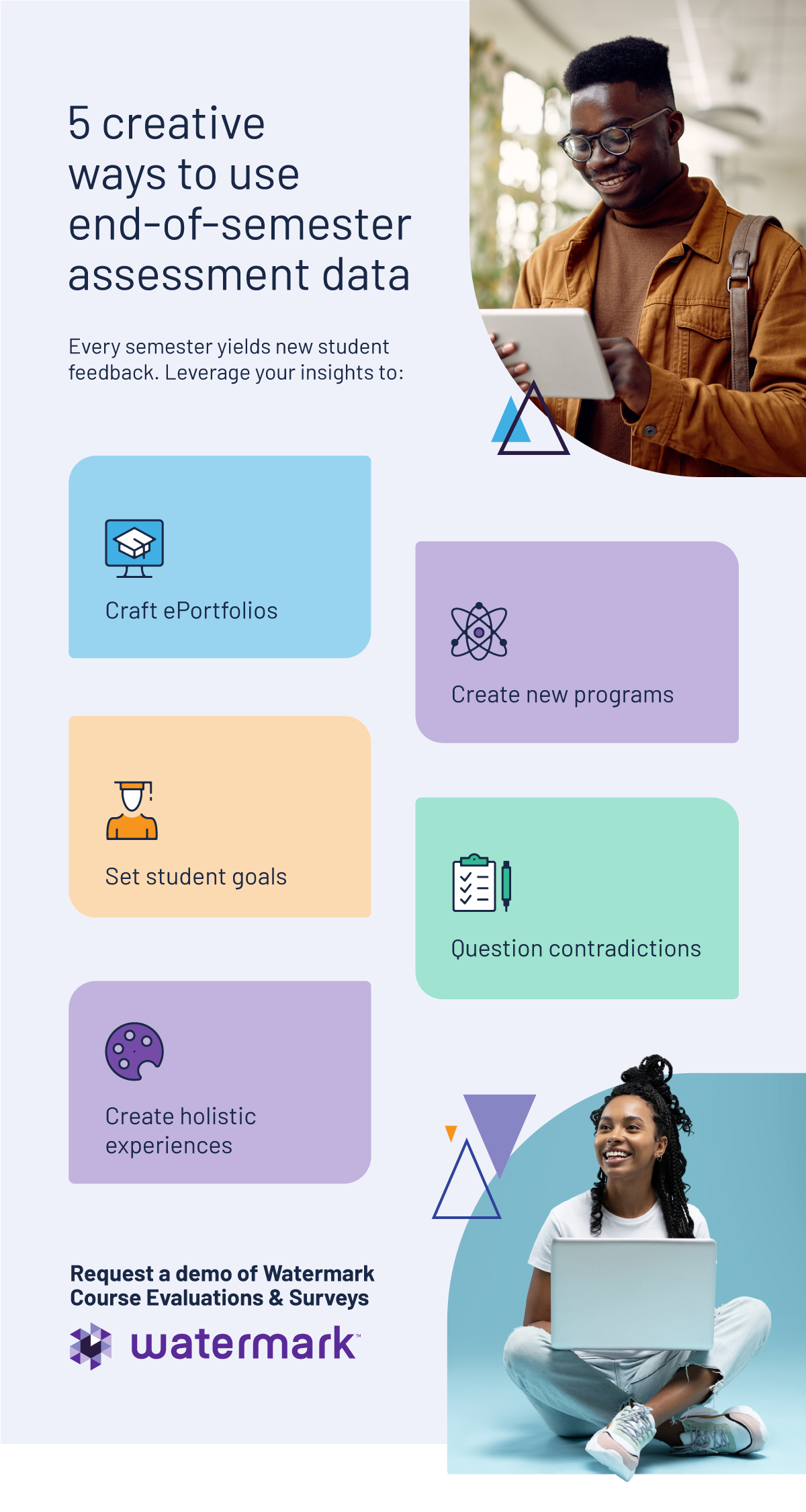
Improving student satisfaction can benefit your institution immensely. When your students feel satisfied with their experience and education, they’re more likely to remain engaged in the curriculum, finish their programs, and reach graduation.
High levels of student satisfaction can help you reach campus initiatives and drive change at your institution. Here are nine tips to improve student satisfaction in higher education institutions.
What is student satisfaction?
Student satisfaction depicts student feelings and attitudes toward their higher education institution and education. Students use the experience on campus and the services, programs, facilities, and resources they can access to determine the value they’re receiving from their institution. If we break these factors down further, they would consist of characteristics like:
- A professor’s teaching ability
- Campus security
- Quality of facilities
- Technology implementation
- Suitable financial aid
- Instructional effectiveness
- Institutional reputation
- Student growth and development
- Academic advising
Understanding the quality of each student’s experience at your institution is essential for creating new initiatives and strategies to boost satisfaction. Satisfaction plays a significant role in educational outcomes, which means high satisfaction rates can benefit your institution by aiding in retention, enrollment, and more.
What causes student dissatisfaction?
Understanding the most common causes of student dissatisfaction can help you develop strategies to mitigate these factors on your campus. Here are the top five reasons students become dissatisfied:
- Lack of belonging: A sense of belonging on campus is one of the most essential components of student satisfaction. But some students, especially minority and nontraditional students, may struggle to experience a strong sense of belonging. Student organizations, mentorship programs, and social events can help meet this need. However, even when institutions offer these opportunities, some students are unaware of them or face practical obstacles when trying to access them.
- Financial concerns: Difficulty affording tuition is the leading cause of students dropping out. Students affected by financial stress are conscious of the amount they’re investing in their education. They are likely to become dissatisfied if they feel they are not getting the value they expect in return.
- Equity gaps: Minority students are more likely to feel dissatisfied, partly due to experiences of on-campus discrimination and a lack of student support resources addressing their distinctive needs.
- Inadequate support: Some students become dissatisfied because their institution lacks the support resources to help them overcome academic challenges. These resources include tutoring, academic advising, success coaching, and faculty office hours. Other students may need additional resources, like child care, financial aid, accessibility services, or mental health counseling.
- Frustration with teaching or curricula: Institutions sometimes focus too narrowly on teaching and curricula when other factors can equally impact student satisfaction. Students can become dissatisfied if they feel that their lecturers lack engaging teaching methods or that the course material is not preparing them to achieve their career goals.
The importance of student satisfaction
Student satisfaction is a huge part of the learning process. Your students pay a lot to receive a high-quality education, and they deserve to feel like that money is going to good use. In this case, “high-quality education” encompasses more than just the knowledge that will drive them toward their future career — it’s everything your institution offers, including:
- Meals and dining: When students like the food your dining facilities provide and take advantage of campus resources, they’re much more likely to be in high spirits and maintain more stable mental health. Research has linked decreased academic satisfaction to a simultaneous decrease in psychological health, leading students to develop high stress, anxiety, and depression. Students who enjoy the campus experience will feel a sense of pride and achievement in their education and have more motivation.
- Campus community and culture: The student experience on campus outside classes is as essential as classroom learning opportunities. Campus culture has a positive impact on satisfaction, raising education quality. You can improve student happiness by offering a variety of clubs and dedicating resources to improve amenities like a student gym or recreational center, outdoor spaces, and study areas.
- Financial support: A rising concern for many higher education students is student loans and debt after graduation. At-risk students and the general student population are more likely to succeed when they utilize these support services. Students appreciate supportive and transparent financial aid processes, and the effectiveness of these services can significantly impact overall student satisfaction.
- Availability of or relationships with professors: Students value interpersonal relationships with their educators and the ability to access support when necessary. Their perspectives of your educators can boost satisfaction and improve teaching quality. This satisfaction will likely lead students to continue their studies, graduate, and recommend your institution to people they know — increasing your retention rates and enrollment numbers. Satisfied graduates may also return for future alumni events and be more likely to support your institution financially.
Students who spend lots of time on campus, have adequate financial support for loans, and are pleased with their professors are more likely to feel good about their school choice. No matter how prestigious your institution is, poor student satisfaction reports will negatively impact how the outside world views your school’s character, effectiveness, and value.
Student satisfaction ratings are regularly used as higher education performance indicators, reflecting the quality of your holistic education experience. When these ratings go down, students are more likely to transfer to another institution, drop out, or avoid your institution altogether, making it challenging to reach campus initiatives and set new goals.
Measuring student satisfaction in higher education
Before taking steps to foster student satisfaction, you must understand how to gauge current levels of satisfaction and which areas need improvement. Gathering data can ensure you dedicate the proper resources and time to driving the change your students want to see on campus. It is also important to gauge the effectiveness of your initiatives as you make changes. Assessing strategy performance will allow you to determine where to make additional adjustments and whether you’re on the right track.
Gathering direct feedback from your students through detailed course critiques and surveys is an excellent way to determine what areas need immediate attention. Your students already know what they want to see on your campus and in the classroom, so feedback opportunities are a great way to discover game-changing insights.
For example, student satisfaction surveys can assess whether teaching methods are effective by asking students how satisfied they are with their lecturer’s presentation style, lesson plans, or use of technology. These questions could come with a student satisfaction scale, with options ranging from very unsatisfied to very satisfied. You could also include more open-ended questions, like “What specific changes could your lecturer make to their presentation style to create more engaging lessons?”.
These evaluations have additional benefits for students, such as prompting self-reflection and empowering students to take an active role in their education by sharing their voices. Student feedback data can also inform faculty performance reviews, presenting an opportunity to reward the faculty members who contribute most to student satisfaction.
You can also measure student satisfaction by:
- Comparing programs: Comparing successful programs to classes that may need more attention helps identify improvement opportunities and solidify best practices.
- Analyzing student performance data: Analyzing grades and course completion data can help measure the effectiveness of teaching and support services, which contribute to student satisfaction.
- Conducting financial reporting: Reviewing financials can help determine which investment areas have the greatest impact on student satisfaction.
- Tracking faculty credentials: Assessing faculty credentials can help identify which areas need more expertise to deliver high-quality learning experiences.
How to improve student satisfaction at your institution
Higher education institutions can implement various strategies to improve student satisfaction. Some of these tips may involve adjusting practices you currently have in place, while others may be new steps you can take to boost student responses and engagement.
While it’s vital to enhance satisfaction for your students, you don’t want to treat them like paying customers by always giving them exactly what they want instead of what they need for success. Educators should strive to satisfy their needs while providing them with the learning outcomes and resources they require to graduate and enter the workforce.
Check out these nine tips to improve student satisfaction in meaningful ways.
1. Implement creative initiatives
Many campus initiatives aim to boost student engagement and benefit your campus, but some are more student-directed than others. Focusing on student well-being can positively impact their experiences on campus. Think outside the box to develop new initiatives that stand out to your students and the community. Ideas include mentorship programs, mental health committees, and unique social clubs.
2. Foster inclusion and celebrate diversity
Students venture to your campus from all walks of life, and you must do your best to satisfy all their needs, including ethnically diverse and low-income students who fall in the minority. These students can face debilitating issues like discrimination, hate crimes, bullying, and racial harassment on campus, which can significantly impact their academic experiences.
Focus on deciding what resources and tools your campus has to guide these students to success. Fostering a safe, welcoming, and inclusive institution will benefit every student. You can expect student satisfaction to increase when you reduce harmful actions and boost efforts to deliver student support and foster a sense of well-being and belonging.
3. Offer and promote extra support services
Students face many challenges within the bounds of campus and beyond. Offering high-quality support services will help learners attain the assistance they need to succeed academically and in every other facet of life. These resources extend past typical writing and tutoring centers offered at most institutions and include services like:
- Mental health services, like a counseling center.
- A scheduling and course registration center.
- A first-year seminar course.
- Academic advising to define success pathways.
- A mentoring program with faculty and students.
- A career center for resume building and job application assistance.
- An accessibility office.
- A recreation center for health and fitness.
- A multicultural student affairs office.
- Resident assistant programs for students living on campus.
4. Transform the curriculum
Work alongside students to review and codevelop the curriculum. Use their feedback to tailor courses and ensure every assessment, assignment, and learning module adds value to your student’s education. Using student feedback will be vital during this stage, as you will want to make changes that positively influence their experiences.
Using feedback can help you ensure students have the resources they need to succeed and promote a positive campus culture, leading to improved engagement that will connect students with their studies and peers. With their surveys and evaluations, you can determine whether to adjust teaching practices, reconsider the number of quizzes and exams throughout the semester, adjust curriculum credits, and so much more.
5. Ask for feedback and apply it
One of the easiest ways to foster student satisfaction is by asking students directly. A student satisfaction survey gives students a voice and lets them describe the changes they want to see on campus. Gather a complete picture of student engagement and satisfaction by examining qualitative and quantitative data. You can take their thoughts and opinions and turn data into action.
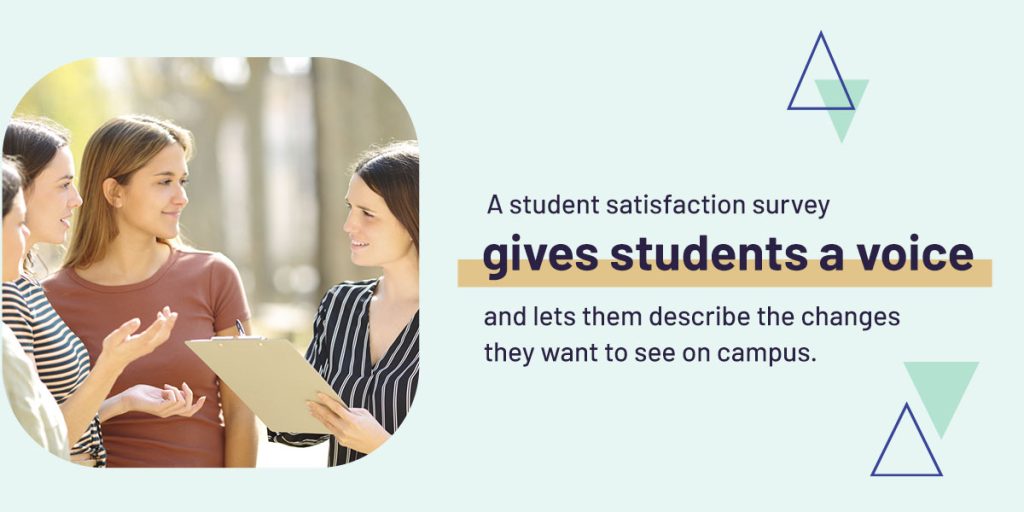
One-size-fits-all student surveys neglect to focus on improvement opportunities. It’s crucial to offer open-ended opportunities for students to voice their opinions, such as interviews, focus groups, and unrestricted questionnaires. These platforms will allow students to voice their concerns while you show them you care about their experience and prioritize taking steps to improve it in any way you can.
Once you have enough data, you can formulate a strategy to target areas of concern to increase student satisfaction rates.
6. Invest in innovation
Innovative technologies can transform courses and academic programs. Technology is a prominent feature in every industry to some extent, so it’s essential for students to interact with the equipment and technologies they may see in their careers.
Immersive technology allows for more hands-on opportunities and encourages students to exhibit the skills they’ve learned rather than only the information they remember. Whether you invest in new lab equipment, integrate new computers on campus, or find ways to incorporate virtual reality learning opportunities, there are many ways to embrace innovation and bring exciting experiences to the classroom.
7. Update your amenities
Updated amenities can go a long way to highlight your campus as caring and improve student satisfaction in higher ed. Some popular amenities that many students enjoy include fitness centers, recreational centers, study spaces, dining options, and clubhouse or community social spaces.
You can also improve student satisfaction by updating some often neglected amenities. For example, you can transform the mailroom experience by implementing lockers to reduce stress related to picking up a package by a certain time or theft in community buildings.
You can also update laundry facilities. Ensure washers and dryers are up to date and operate efficiently. Keeping these spaces clean can also encourage more use, and implementing some security measures such as key cards or passcodes can reduce potential traffic so students feel more comfortable leaving the room while the machines run.
If your campus allows pets, consider adding or updating pet-friendly spaces. A small area for dogs to run can encourage students to spend more time on campus with their furry friends. Consider adding tables or benches so students can relax, eat a small meal, or study while their pets release energy.
The amenities you update or add should reflect student needs. Gather student feedback and consider what neighboring institutions offer that could improve the campus experience for your students.
8. Consider digital course materials
Although in-person classes offer immense value for many students, learners can also find amazing opportunities through online courses or digital course materials. For some students, opting for a digital class reduces the stress associated with commuting to campus or conflicting with other responsibilities.
Digital course materials ensure students always have access to the information they need whenever they need it. For example, if a student travels for the weekend, they won’t need to stress about leaving behind a textbook if they can easily access the material online.
Traditional on-campus classes can also offer various digital opportunities to give students a small break from the routine hustle and bustle. For example, educators can record some class lessons and make them available online. This strategy could be beneficial during busy times of the year, such as midterms or finals, or when the weather may be less than ideal for traveling. This option allows students to participate in class virtually so they don’t miss essential information.
9. Transform the first-year experience
A student’s first year is crucial to their long-term success. Although each year brings immense value to a student’s goals and aligns them with their career path, the first year is a make-or-break experience for many. Students are often branching out on their own for the first time in their lives.
New students typically encounter challenges, such as making new friends, being away from their families, and taking risks. Proper support and reliable resources can help students develop healthy coping strategies and boost their mental health, improving their happiness and satisfaction.
There are several ways you can transform and enhance the first-year experience to set students on the right track from day one. Creating a mentorship program, providing resources, and offering experience classes are simple ways to encourage more student participation and align students with their new support system.
You can also boost satisfaction by crafting class schedules that reflect student interests, needs, and wants to show each student that you support their dreams and goals. These actions can play a significant role in showing your students that you care about their well-being, mental health, academic careers, and future career paths.
Enhance your student satisfaction insights with Watermark

Evaluations and surveys are your most effective tools for gathering student satisfaction data. But many institutions grapple with low response rates, glean few insights from feedback, and see months go by between survey distribution and implementation of satisfaction-boosting changes based on the survey data. If your institution is experiencing any of these problems, Watermark Course Evaluations & Surveys is your tailor-made solution.
This higher education survey solution can help your institution:
- Conduct surveys anytime and gain real-time access to responses.
- Increase response rates through LMS integration, smartphone-friendly interfaces, reminders, alerts, and optional grade gating.
- Get richer insights through user-friendly data analytics tools, including longitudinal comparisons and AI-powered sentiment analysis.
- Access the full Educational Impact Suite (EIS), including Curriculum Strategy, to transform courses based on student feedback.
Improving student satisfaction can be simple with the right tools, like the ones we’ve crafted at Watermark. Request a demo of our solutions to see the future of student satisfaction at your institution.
















































